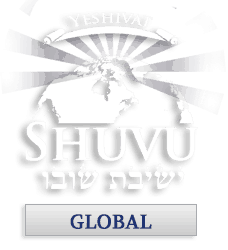וְנָֽתַתָּ֖ אֶל־הָֽאָרֹ֑ן אֵ֚ת הָֽעֵדֻ֔ת אֲשֶׁ֥ר אֶתֵּ֖ן אֵלֶֽיךָ: וְעָשִׂ֥יתָ כַפֹּ֖רֶת זָהָ֣ב טָה֑וֹר אַמָּתַ֤יִם וָחֵ֨צִי֙ אָרְכָּ֔הּ וְאַמָּ֥ה וָחֵ֖צִי רָחְבָּֽהּ: וְעָשִׂ֛יתָ שְׁנַ֥יִם כְּרֻבִ֖ים זָהָ֑ב מִקְשָׁה֙ תַּֽעֲשֶׂ֣ה אֹתָ֔ם מִשְּׁנֵ֖י קְצ֥וֹת הַכַּפֹּֽרֶת: וַֽ֠עֲשֵׂ֠ה כְּר֨וּב אֶחָ֤ד מִקָּצָה֙ מִזֶּ֔ה וּכְרוּב־אֶחָ֥ד מִקָּצָ֖ה מִזֶּ֑ה מִן־הַכַּפֹּ֛רֶת תַּֽעֲשׂ֥וּ אֶת־הַכְּרֻבִ֖ים עַל־שְׁנֵ֥י קְצוֹתָֽיו: וְהָי֣וּ הַכְּרֻבִים֩ פֹּֽרְשֵׂ֨י כְנָפַ֜יִם לְמַ֗עְלָה סֹֽכְכִ֤ים בְּכַנְפֵיהֶם֙ עַל־הַכַּפֹּ֔רֶת וּפְנֵיהֶ֖ם אִ֣ישׁ אֶל־אָחִ֑יו אֶ֨ל־הַכַּפֹּ֔רֶת יִֽהְי֖וּ פְּנֵ֥י הַכְּרֻבִֽים: וְנָֽתַתָּ֧ אֶת־הַכַּפֹּ֛רֶת עַל־הָֽאָרֹ֖ן מִלְמָ֑עְלָה וְאֶל־הָ֣אָרֹ֔ן תִּתֵּן֙ אֶת־הָ֣עֵדֻ֔ת אֲשֶׁ֥ר אֶתֵּ֖ן אֵלֶֽיךָ:
And you shall place into the ark the testimony, which I will give you. And you shall make an ark cover of pure gold, two and a half cubits its length and a cubit and a half its width. And you shall make two golden cherubim; you shall make them of hammered work, from the two ends of the ark cover. And make one cherub from the one end and the other cherub from the other end; from the ark cover you shall make the cherubim on its two ends. The cherubim shall have their wings spread upwards, shielding the ark cover with their wings, with their faces toward one another; [turned] toward the ark cover shall be the faces of the cherubim. And you shall place the ark cover on the ark from above, and into the ark you shall place the testimony, which I will give you.
Exodus 25:16-21
This week’s Torah portion contains fairly detailed instruction on the building of the Mishkan. Specifics are given about the construction of the Ark of the Covenant, and what materials and processes are to be used in its construction. Hashem commands us, regarding the artwork on the Ark of the Covenant, as well as in the Holy of Holies and the Mishkan itself. While these instructions cannot be regarded as complete the detail involved is quite impressive.
Quite often in modern times, we bandy about the phrase, “G-d is not a G-d of religion.” Yet it is obvious, from this week’s Torah, that Hashem is very interested in specifics. If Hashem is not interested in religion, why are all of these specifics listed in the Torah as instructions that we are to follow? For many this can be a very troubling question.
The answer is actually contained in Scripture, not only in this week’s Torah, but in much of the Torah itself. Hashem is interested in religion. He is interested in specifics. Hashem explicitly tells us to do things a certain way. This is the very definition of religion, doing things that Hashem has told us to do, in the way he tells us to do them. If we choose to not act in the way Hashem instructs us, then what we do is considered invalid, pasul. If we choose not to pay attention to how Hashem instructs us to do things, we are in fact snubbing the G-d of Israel. We are saying that Hashem is not important enough to pay attention to the specifics of his instructions. This is what is meant by the 4th commandment of the Dibraya, to not take the Name of Hashem casually. If we do not care enough about what Hashem has told us to do, the way he has told us to do it, do we love Hashem with all our heart, all our soul and all our strength? Not only must we love Hashem more, that is, with the right intent and mindset, but we must love Hashem all our might, which means following the religion of Hashem and doing what he has told us to do, in the way he has told us to do it. Shabbat shalom.
